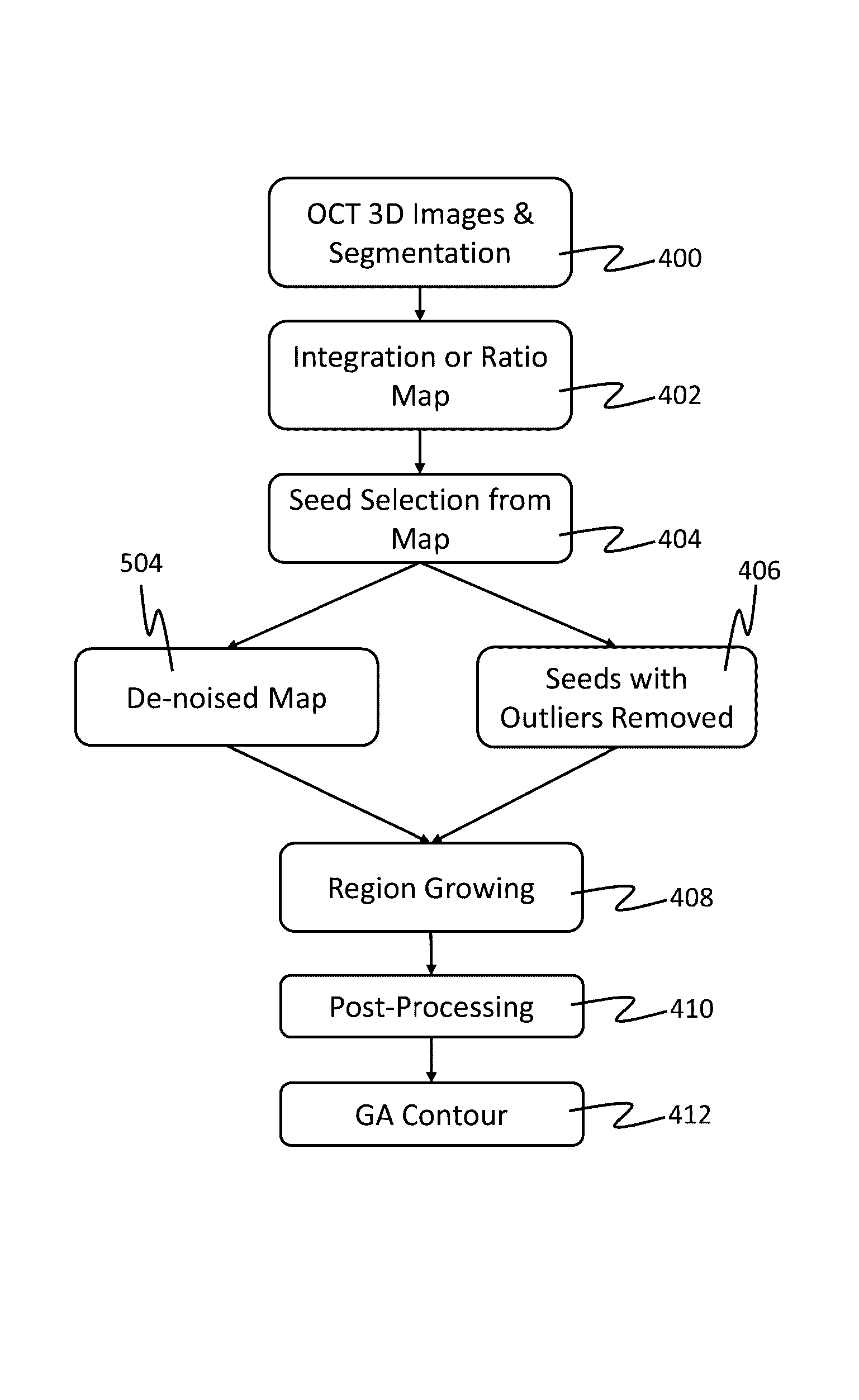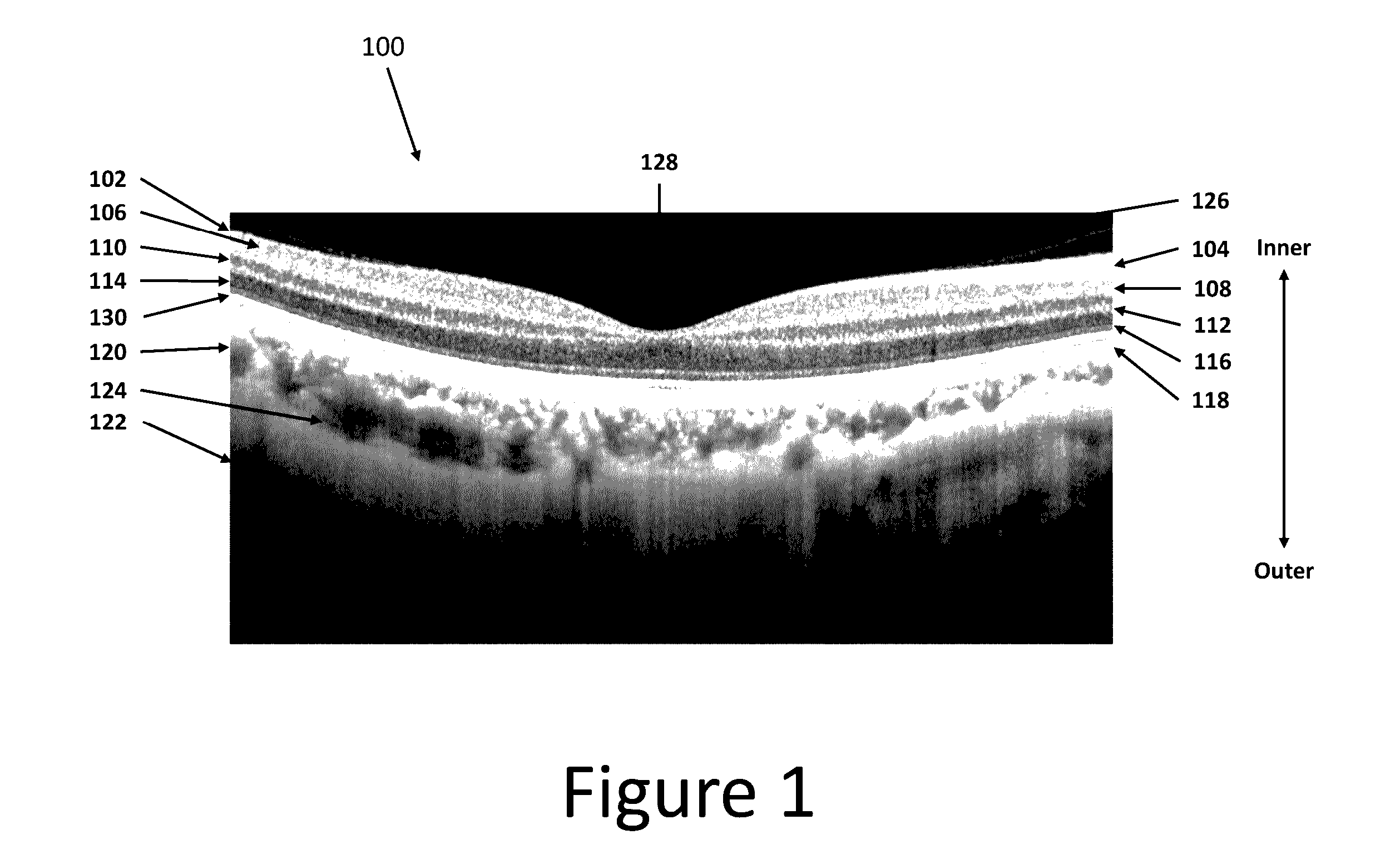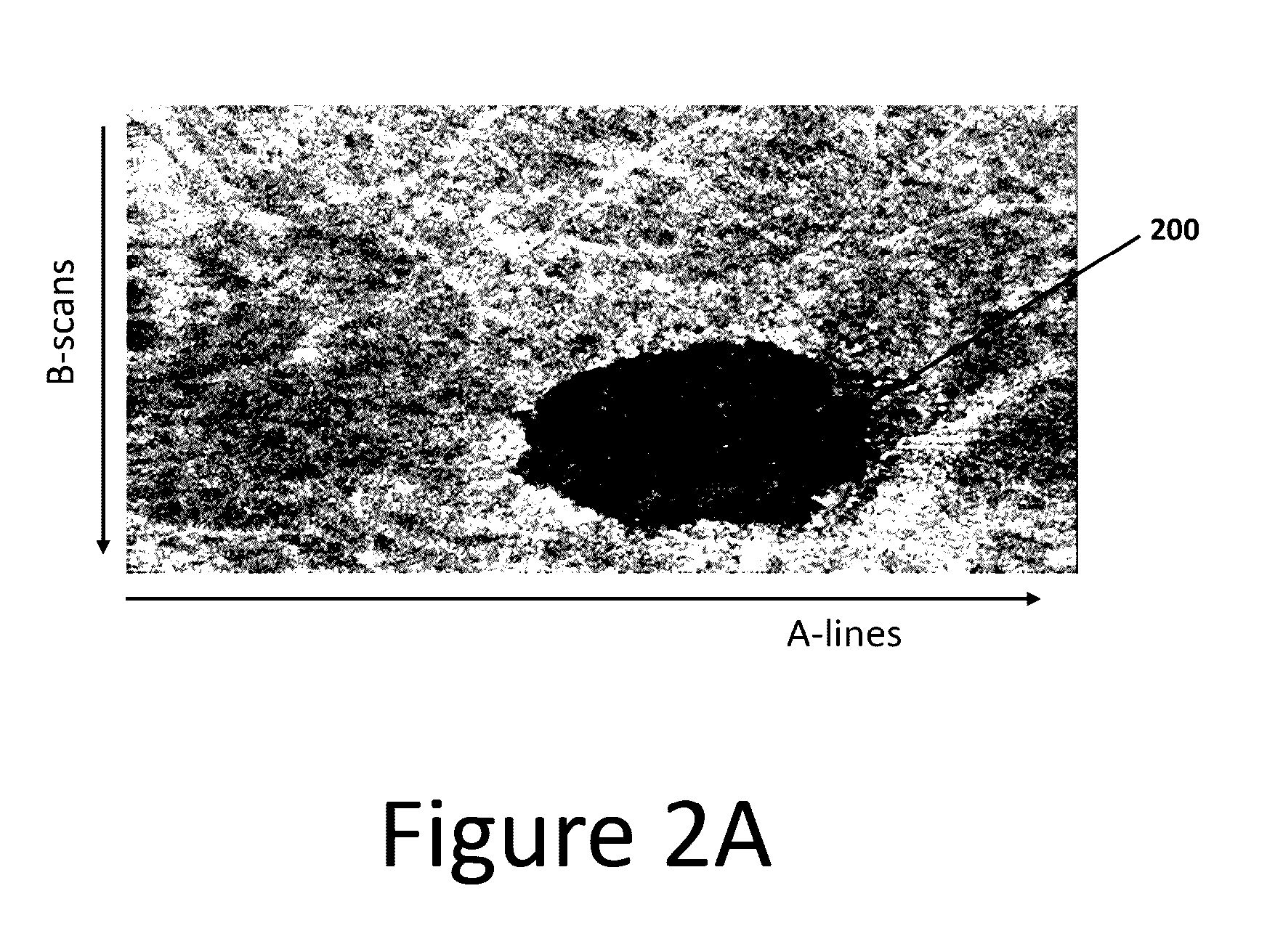Geographic atrophy identification and measurement
a geographic atrophy and identification technology, applied in the field of identification and measurement of geographic atrophy, can solve the problems of reducing reflectivity, thinning affected tissues, and increasing thickness
- Summary
- Abstract
- Description
- Claims
- Application Information
AI Technical Summary
Problems solved by technology
Method used
Image
Examples
Embodiment Construction
[0040]Certain terminology is used herein for convenience only and is not to be taken as a limitation on the present invention. Relative language used herein is best understood with reference to the drawings, in which like numerals are used to identify like or similar items. Further, in the drawings, certain features may be shown in somewhat schematic form.
[0041]It should be noted that while this disclosure is based on the OCT imaging modality, it is not limited to OCT. For example, it is applicable to ultrasound as well. It should also be noted that the term “retina” typically refers to the tissue inner to the retinal pigment epithelium (RPE) cell bodies. For the purposes of this disclosure, the retina is defined as the tissue layers including and inner to the RPE cell bodies. Therefore, the choroid and sclera are not considered retinal tissue as used herein. A more detailed illustration of the anatomy and relative locations of layers of the eye and retina as referred to herein is s...
PUM
| Property | Measurement | Unit |
|---|---|---|
| center wavelength | aaaaa | aaaaa |
| wavelength | aaaaa | aaaaa |
| wavelengths | aaaaa | aaaaa |
Abstract
Description
Claims
Application Information
 Login to View More
Login to View More - R&D
- Intellectual Property
- Life Sciences
- Materials
- Tech Scout
- Unparalleled Data Quality
- Higher Quality Content
- 60% Fewer Hallucinations
Browse by: Latest US Patents, China's latest patents, Technical Efficacy Thesaurus, Application Domain, Technology Topic, Popular Technical Reports.
© 2025 PatSnap. All rights reserved.Legal|Privacy policy|Modern Slavery Act Transparency Statement|Sitemap|About US| Contact US: help@patsnap.com



